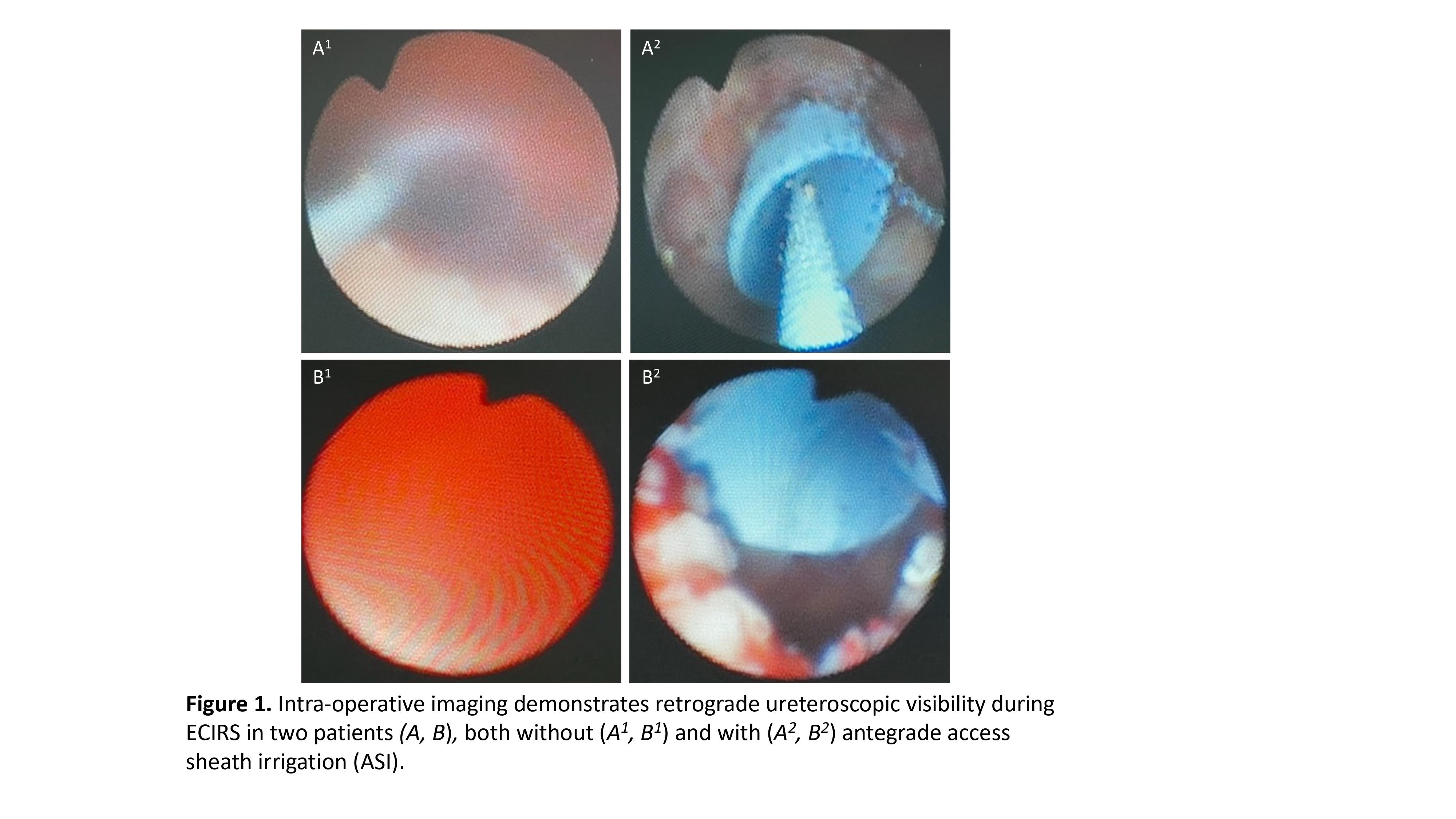Back
Poster, Podium & Video Sessions
Podium
PD19: Stone Disease: Surgical Therapy (including ESWL) II
PD19-09: Seeing is Believing: Optimizing Renal Pelvic Pressure Improves Visualization During Endoscopic Combined Intrarenal Surgery
Saturday, May 14, 2022
8:20 AM – 8:30 AM
Location: Room 245
Cayde Ritchie*, John Hartman, Akin Amasyali, John Jung, Aviram Assidon, Joshua Belle, D. Duane Baldwin, Loma Linda, CA
- CR
Podium Presenter(s)
Introduction: Endoscopic combined intrarenal surgery (ECIRS), involving percutaneous renal access and retrograde ureteroscopy, achieves high stone free rates by allowing ureteroscopic visualization of calyces difficult to see with an antegrade approach. Visibility during ureteroscopy relies on irrigation through a 3Fr working channel, limiting the ability to clear blood and debris. Low irrigation rates also result in collapse of the collecting system, further limiting calyceal visualization. We have noted that visibility can be improved by placing the irrigation stopcock into the percutaneous sheath. The purpose of this study was to compare renal pelvic pressure (RPP) and retrograde ureteroscopic visibility during ECIRS, with and without access sheath irrigation (ASI), to determine the safety and efficacy of this technique.
Methods: Prospectively collected RPP measurements from 15 patients undergoing ECIRS at a single academic institution were retrospectively reviewed. During retrograde ureteroscopic renal mapping, a pressure monitor was connected to the working channel of a flexible ureteroscope. With the tip of the ureteroscope in the renal pelvis, RPP measurements were performed with and without ASI. Irrigation was maintained at a standard height of 1.28m. Study endpoints were RPP and endoscopic visibility, based on a blinded review of intraoperative photos by ten urologists using a 10-point Likert scale. Statistical analysis was performed using a paired samples t-test and Mann-Whitney U test, with significance defined as p<0.05.
Results: Antegrade ASI yielded significantly greater RPP (25.9 vs. 8.5 mmHg, p<0.001) and improved subjective visibility (6.9 vs. 1.9, p<0.001), when compared to ECIRS without antegrade flow. Using ASI, RPP never exceeded the approximate 35 mmHg threshold for pyelovenous backflow. Intra-operative pictures display greater collecting system distension, higher clarity of instruments, and less bleeding obscuring the field (Fig. 1).
Conclusions: Antegrade access sheath irrigation represents a novel strategy for optimizing renal pelvic pressure and endoscopic visibility during ECIRS. Delivering continuous antegrade irrigation is a safe and effective method to improve visibility, without exceeding the threshold for pyelovenous backflow.
Source of Funding: None

Methods: Prospectively collected RPP measurements from 15 patients undergoing ECIRS at a single academic institution were retrospectively reviewed. During retrograde ureteroscopic renal mapping, a pressure monitor was connected to the working channel of a flexible ureteroscope. With the tip of the ureteroscope in the renal pelvis, RPP measurements were performed with and without ASI. Irrigation was maintained at a standard height of 1.28m. Study endpoints were RPP and endoscopic visibility, based on a blinded review of intraoperative photos by ten urologists using a 10-point Likert scale. Statistical analysis was performed using a paired samples t-test and Mann-Whitney U test, with significance defined as p<0.05.
Results: Antegrade ASI yielded significantly greater RPP (25.9 vs. 8.5 mmHg, p<0.001) and improved subjective visibility (6.9 vs. 1.9, p<0.001), when compared to ECIRS without antegrade flow. Using ASI, RPP never exceeded the approximate 35 mmHg threshold for pyelovenous backflow. Intra-operative pictures display greater collecting system distension, higher clarity of instruments, and less bleeding obscuring the field (Fig. 1).
Conclusions: Antegrade access sheath irrigation represents a novel strategy for optimizing renal pelvic pressure and endoscopic visibility during ECIRS. Delivering continuous antegrade irrigation is a safe and effective method to improve visibility, without exceeding the threshold for pyelovenous backflow.
Source of Funding: None


.jpg)
.jpg)